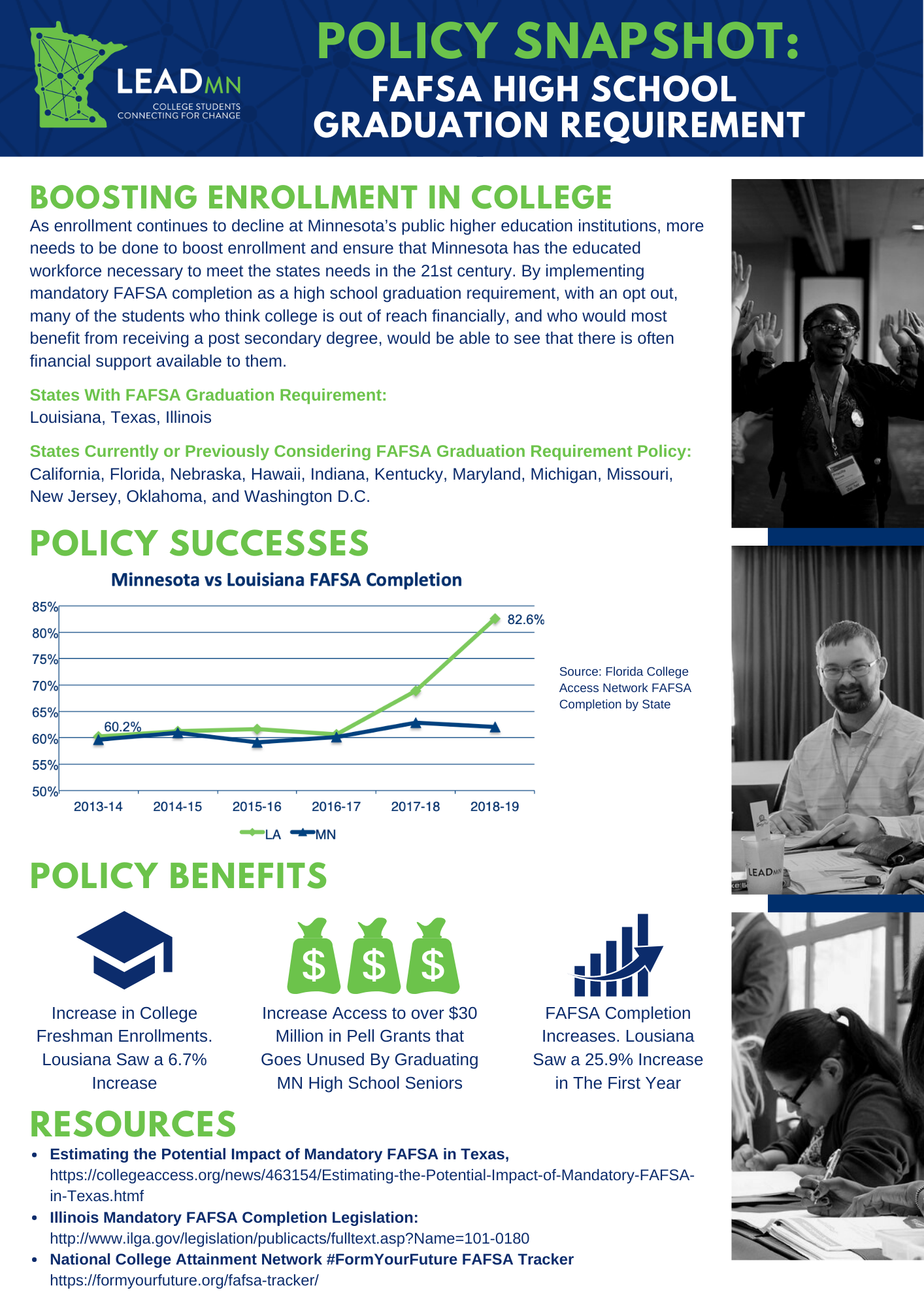Minnesota, like many other states is seeing the impact of Covid-19 on its college enrollments as students wait to see what the fall semester will bring. Because of the uncertainty and hardship brought upon by the pandemic many current and potential students have not completed their FAFSA. Minnesota currently Ranks 42nd in FAFSA completions with only 43.9% of high school seniors completing a FAFSA as of May 22nd. In comparison Tennessee has 75.5% of high school seniors who have completed the FAFSA (1).
Many students are considering a gap year or have found their ability to afford college disappear as the pandemic has impacted families across the country. Young people and communities of color, are experiencing higher rates of unemployment during the pandemic compared to other groups. Returning students are holding off on completing the FAFSA, with renewals in Minnesota down -5.7%. Most concerning is FAFSA renewals by Pell Grant eligible students, which are down -8.1% (13th highest nationally) (2).
Traditionally when the economy goes bad, higher education sees a boost in college enrollments, but the pandemic has created a unique situation where we may not see that enrollment boost. Minnesota State is projecting a system wide enrollment decline of between 5% and 20% in the fall. That is why it is absolutely critical for institutions and organizations to work towards boosting enrollment and a critical step to doing that is improving FAFSA completion.
Because of this, LeadMN has launched an initiative to promote FAFSA completion over social media and through outreach to students. In the coming weeks and months we will be asking students #WhyWait? because waiting to complete the FAFSA might create even greater barriers for them. Regardless of if a student is undecided on returning this fall, enrolling for the first time, or if they don’t think they can receive any financial aid, waiting and not completing the FAFSA will only ensure that they will never receive the financial help that might be available to them.
As part of this campaign, LeadMN has created a new FAFSA help page containing resources for students and parents to assist them in completing the FAFSA. Students, parents, admissions representatives, high school counselors, and others can use and share this resource to help students get their FAFSA done before its to late.
Looking to the Future
While this campaign will work to address the short-term impact of the pandemic on FAFSA completions, long-term issues with FAFSA completion will continue to exist. Prior to the pandemic Minnesota had maintained roughly a 61% FAFSA completion rate for graduating high school seniors for at least the past five years. In 2018, an estimated $30.5 million went unused by Pell eligible graduating Minnesota high school seniors (3). This is funding that could have helped thousands of low-income Minnesotans make college more affordable and allow them to pursue their American Dream.
While Congress will need to address the complexity and length of the FAFSA, Minnesota has opportunities through policy and outreach efforts to further boost FAFSA completion, and increase access to grant funding for low-income students. Last legislative session LeadMN advocated and built support for a mandatory FAFSA completion requirement for graduating high school seniors, a policy change that is showing promise in multiple states for helping boost enrollment, and is under consideration in many more. Last session legislation was also passed which requires the Minnesota Office of Higher Education and Minnesota Department of Education to set a FAFSA completion goal for the state. As we look towards the future, major policy reforms, along with supporting investments may be exactly what we need to help ensure that low-income students receive the support they need to pursue a postsecondary education.
-----------------------------------
(1) National College Attainment Network (NCAN) #FormYourFuture FAFSA Tracker https://formyourfuture.org/fafsa-tracker/
(2) NCAN #FormYourFuture FAFSA Tracker, FAFSA Application Renewals 2020-21 Cycle State Data https://public.tableau.com/profile/bill.debaun.national.college.access.network#!/vizhome/FAFSARenewals20-21/StateRenewals
(3) Helhoski, A., Students Missed Out On $2.6 Billion in Free College Money, 2018, https://www.nerdwallet.com/blog/2018-fafsa-study/
